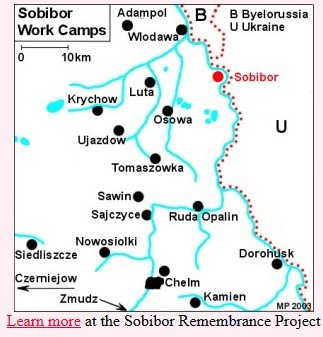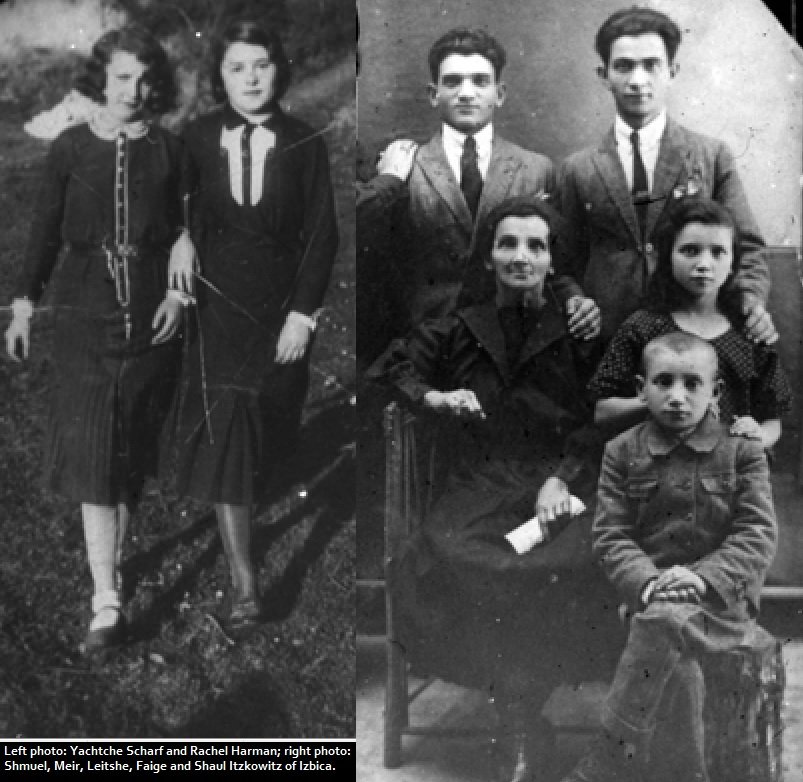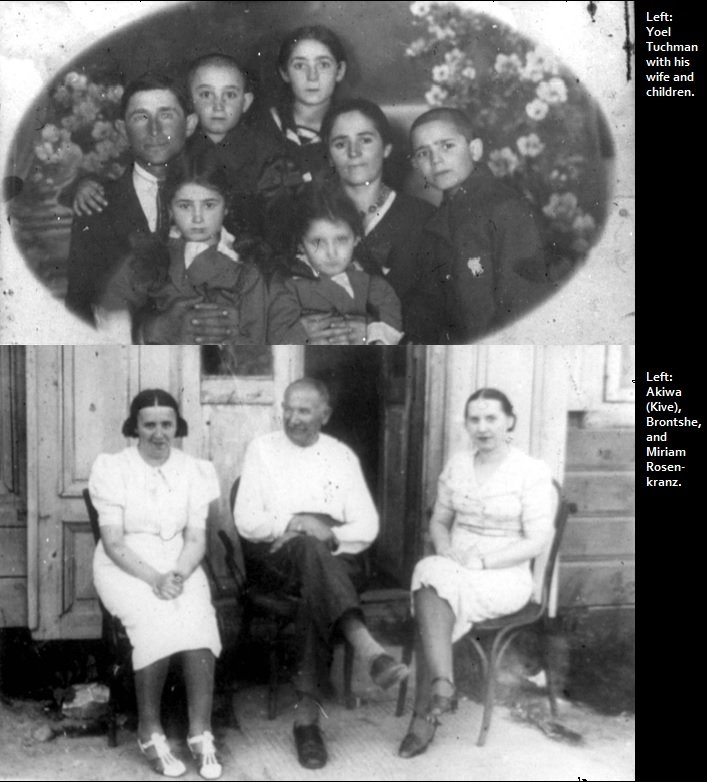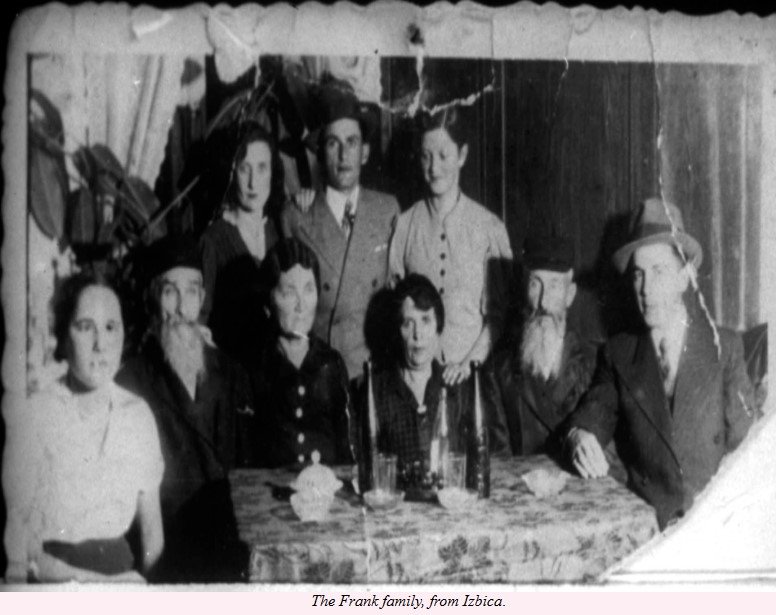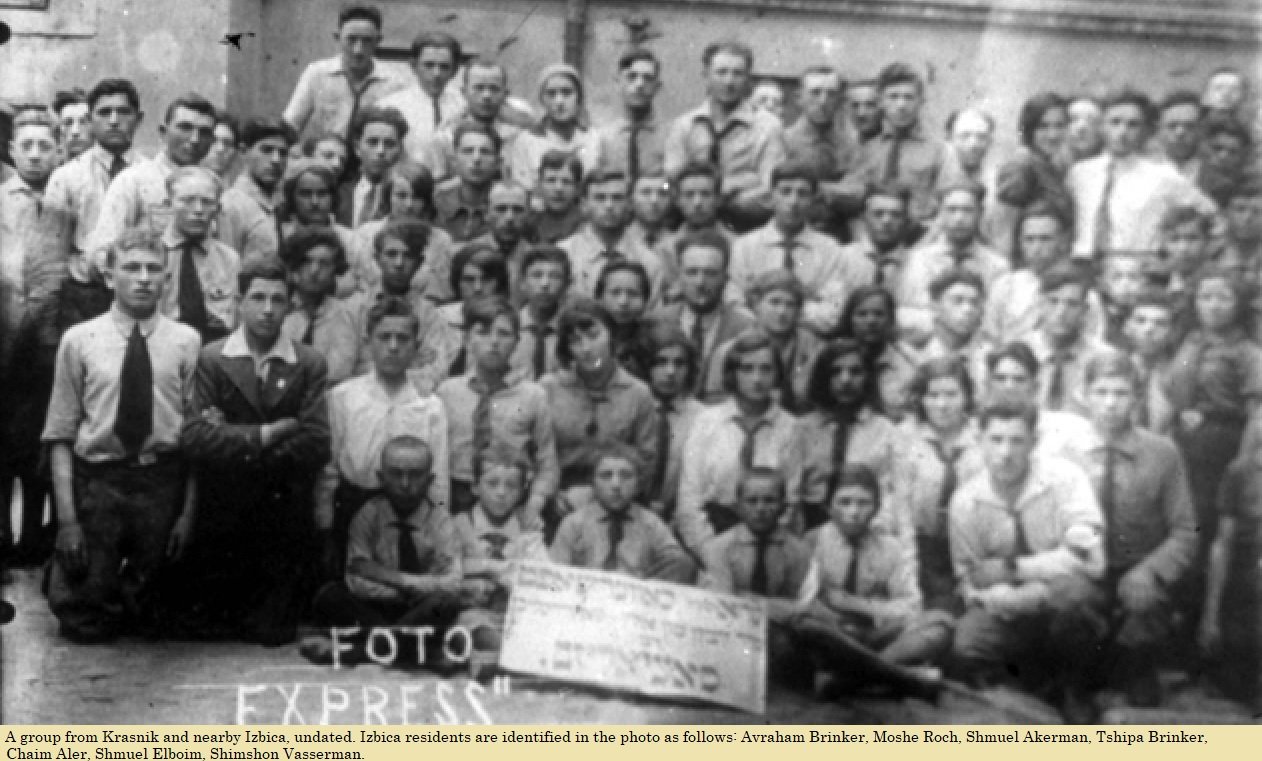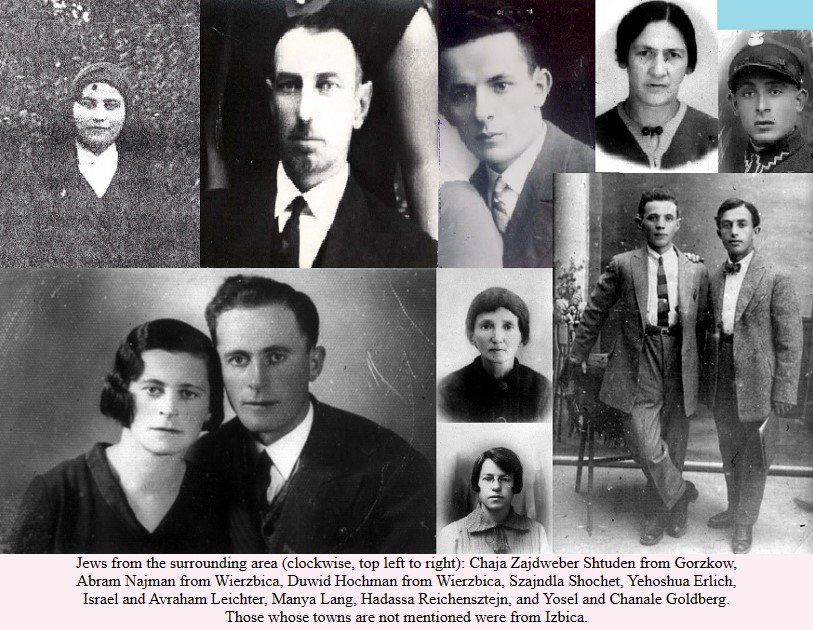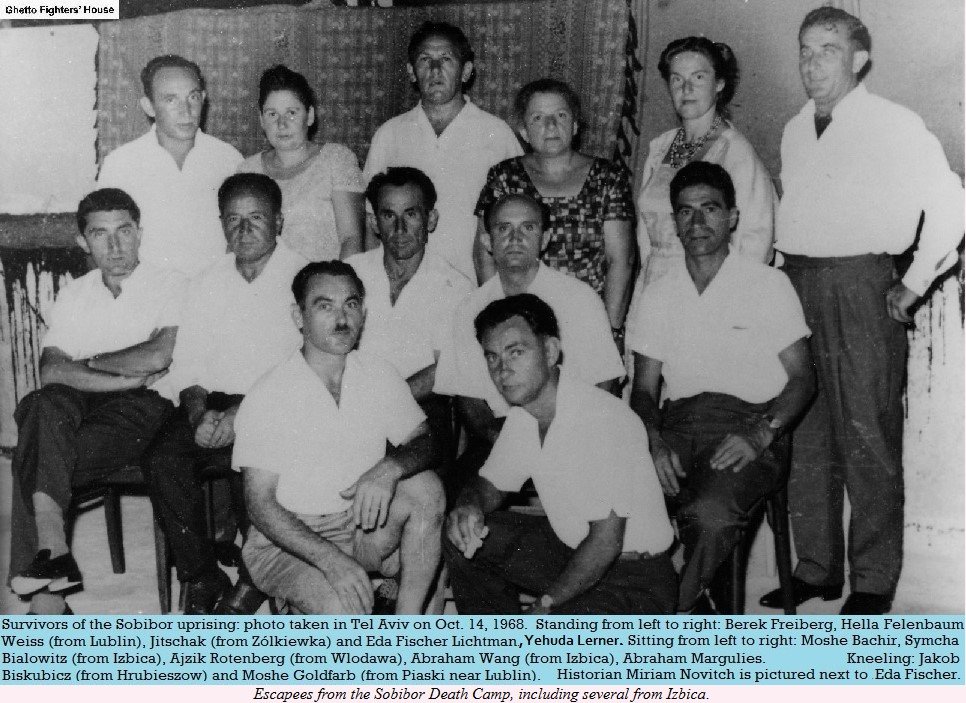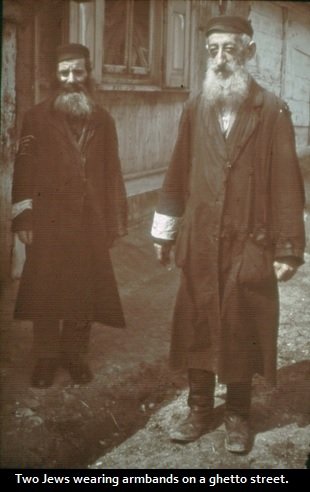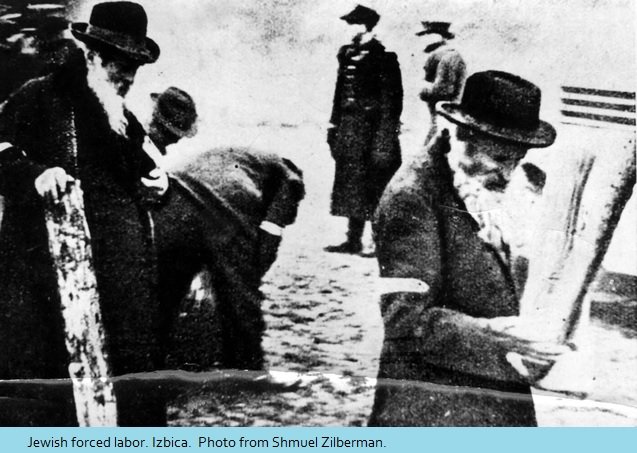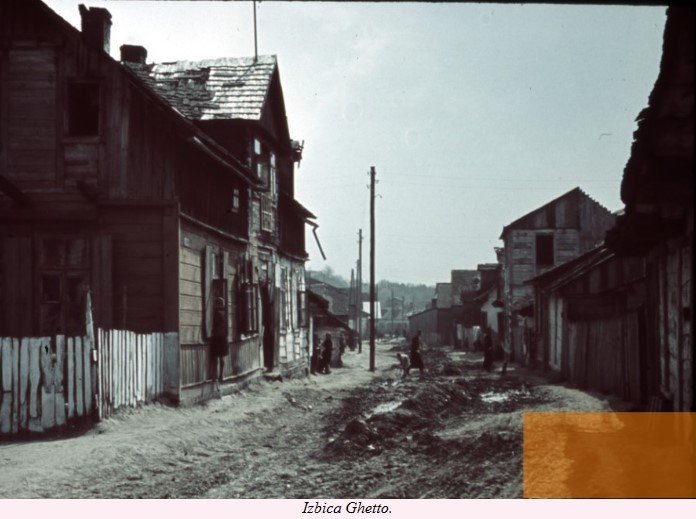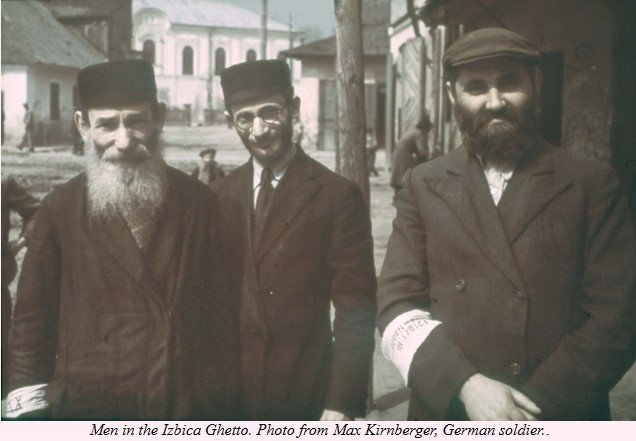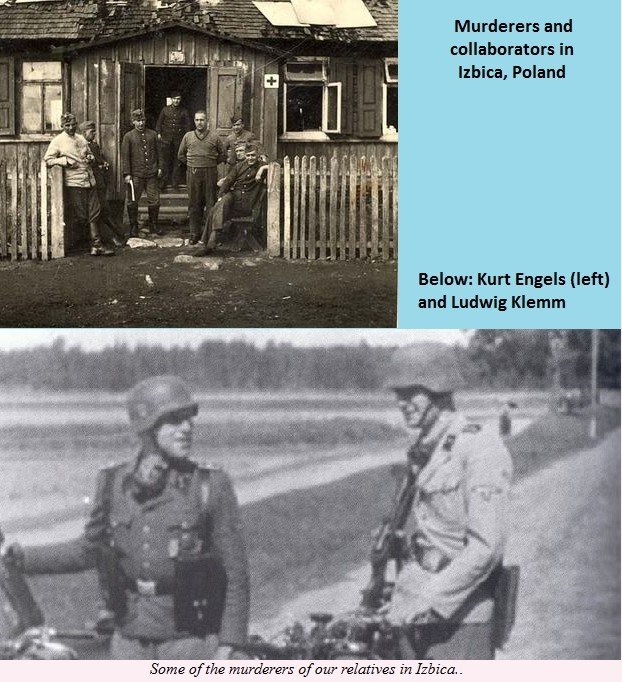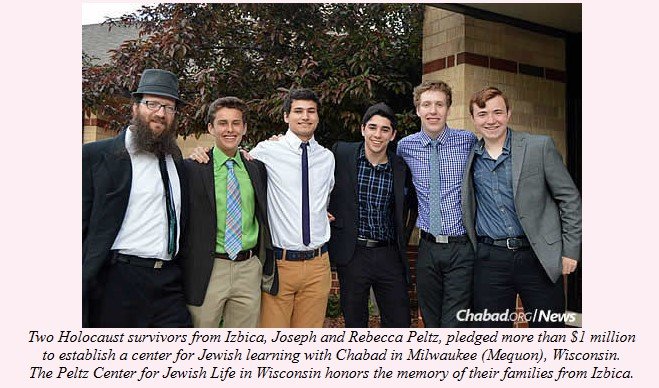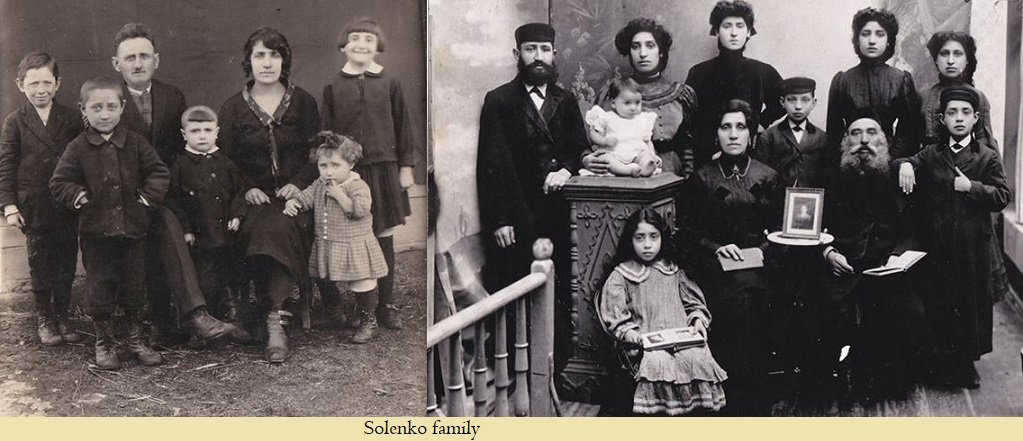Remember Jewish Izbica
Pronunciation: Eez-beetz-a Lubelskie
HISTORY OF THE JEWISH COMMUNITY
Izbica is a town in Krasnystaw County, Lublin Voivodeship, in eastern Poland. It is 8 miles south of Krasnystaw and 37 miles southeast of the regional capital Lublin. The current population is 1,933.
Jews in Izbica established a kehilla in 1775. Under threat of imprisonment, Jews were forbidden to cross the bridge leading from Izbica to Tarnogora. This was due to demands by Christians who saw Jews as threats to their business ventures. There were 407 inhabitants in Izbica in 1827, all Jewish. In 1860, 1,450 people lived in Izbica, and by 1870 the number had increased to 1,800 inhabitants -- all
Jewish. In 1897, 3,019 Jews in Izbica made up 95% of the whole population. In 1921, Izbica had 3,085 residents, including 2,862 Jews. In 1939, Izbica had about 6,000 inhabitants including 5,098 Jews. The Jewish residents ran 166 craftsmen workshops, of which 108 were tailor shops.
The town grew rapidly, most notably after 1835 when the new route from Lublin to Zamosc was established through Izbica. Soon the town became an important local centre of trade and crafts outclassing the neighboring town of Tarnogora after the removal of the Jews. Izbica remains even today the only town in Poland without a parish church. Many Izbica Jews did not speak Polish and
the town remained provincial and poor. In the 19th century, tzadik Rabbi Josef Mordechaj Leiner settled in town and an independent Hasidic community grew around him. In the interwar period, R' Zwi Rabinowicz established another Hasidic manor house in Izbica. Rabbi Izrael "Isser" Landau was the last rabbi of Izbica before the outbreak of World War II.
IZBICA DURING THE HOLOCAUST
After the Nazi invasion in the fall of 1939, local Jews were initially used as laborers to construct an airport in Zamosc. In 1941 the Nazis created a ghetto in Izbica. The ghetto for Jews sent to Izbica was situated in the building used by the fire brigade, behind the railroad track. It was surrounded by barbed wire fencing, and thus there was no way of escaping the ghetto. Izbica became a key Nazi transit point to transport prisoners from one location to another due to its locale on train routes. Eventually it became the largest transit ghetto in the Lublin district. Transports of Jews from Lodz, Czestochowa, Glowno, Konin and Kolo were sent to Izbica. After that, Jews from Czechloslovakia, Moravia, Germany, and Austria started arriving. From March to May 1942, approximately 12,000
to 14,000 people were transported to Izbica. Among the Jews were highly qualified specialists: engineers, doctors, economists including the vice president of Prague, Austrian army generals and professors. From March until June, 1942, around 17,000 Jews from abroad were deported to Izbica transit camp. Most of them were elderly or women and children. In many instances, young men still capable of working were selected from these transports in Lublin and sent to the Majdanek Concentration Camp.
Among the known transports to Izbica were:
-- 2,083 Jews from Theresienstadt on March 11 and March 17, 1942;
-- ~2,000 Jews from Germany on March 13 and March 19, 1942;
-- 1,000 Jews from Koblenz, Germany on March 25, 1942;
-- 1,008 Jews from Germany on March 27, 1942;
-- 208 Jews from Germany (Wurzburg and Kitzingen) on March 24, 1942;
-- 1,000 Jews from Vienna on April 9, 1942;
-- 29 Jews from Luxembourg on April 23, 1942;
-- 1,570 Jews from Germany on April 22 and April 26, 1942;
-- ~1,000 Jews from Theresienstadt on April 27, 1942;
-- 800 Jews from Germany on April 28, 1942;
-- 1,000 Jews from Koblenz, Germany on May 3, 1942
-- unknown number of Jews from Frankfurt, Germany on May 8, 1942
-- 2,007 Jews from Vienna on May 12 and May 15, 1942;
-- ~750 Jews from Germany on May 24, 1942;
-- 2,052 Jews from Slovakia (Spisska, Nova Ves, Poprad) on May 29-30, 1942;
-- 1,001 Jews from Vienna on June 5, 1942;
-- 1,003 Jews from Germany on June 13, 1942;
-- 2,013 Jews from Germany on June 15, 1942
According to testimonies and literature, the first two deportations from Izbica (on 24 March 1942 and 8 April 1942) were sent to Belzec Death Camp. Most of these victims were Polish Jews. They were deported due to the S.S. requiring space for deportees from western countries. The transport of 14-15 May 1942, which consisted of German/Czech Jews, went to Sobibor Death Camp and
Majdanek Death Camp. Members of the Judenrat in Izbica included: Abram Blatt, Tanchem Cwekin, Froim Kutner, Jacob Neumann, Rafael Sznajdmessier, Hersz Tau, and Szymon Szwarc.
The elderly, women, children, and many men as well were sent to the Sobibor Death Camp or the Belzec Death Camps, both located in the Lublin district, not far from Izbica. At the time, no one was aware that these death camps existed. Often German or Czech Jews who spoke German fluently were members of the Judenrat and Jewish police in the ghettos. In Izbica, the local Gestapo chief had
his own private Jewish police squad, recruited from Czech Jews. Especially in Izbica, Jewish police from western countries selected mainly Polish Jews for deportations. Another 4,000 Jews from areas near Izbica and from the Zamosc Ghetto were sent to Izbica transit camp in 1942. According to testimony, the S.S. killed around 2,000 Jewish victims in the course of Izbica's last execution. It took place at the local Jewish cemetery (which had already been destroyed) in November of 1942. On 2 November 1942, a Ukrainian unit of S.S. men from Trawniki and the Police in navy blue from Izbica surrounded the village. In the next few days the Jews were sent to Belzec and Sobibor. Several thousand Jews had been rounded up in the fire station, from where they were chased in groups to the Jewish cemetery and executed there. It is estimated that around 4,000 victims were murdered at buried at the Izbica cemetery.
The transit ghetto was closed down, but a ghetto for the remaining Jews was created. The Nazis took the last Jews from Izbica to Sobibor in April of 1943. The final liquidation of the ghetto took place on the 28th of April 1943, when the last two hundred Jews were sent to Sobibor.
Jan Karski, a courier who witnessed the atrocities of the Holocaust after arriving in the transit ghetto disguised as a guard, tells the following story: "Usually, they stayed in the camp for no more than four days. Soon afterwards, they were herded into the railroad cars only to face their death. During the whole time spent in the camp, they were barely given anything to eat so they had to rely on their own provisions. The camp barracks could accommodate about half of the prisoners. The remainder had no other choice than to stay outdoors. The smell of human excrement, sweat, filth and decay permeated the air."
The two main Nazis in Izbica were Kurt Engels and Ludwig Klem (also spelled Klimt, Klemp, Klempt). Engels committed suicide in 1958. The fate of Ludwig Klem is not known.
Pre-war residents of Izbica included the following persons, all of whom are identified via Yad Vashem photographs: Chaim Ajler, Rivka Altman, Henech Anach, Sima Anach, Noach Begleibter, Avraham Bergman, Yacov Bialovitz, Yehoshua Bialovitz (also listed as Garber), Avraham Brinker, Raizel Blank, Sane Blatt, Yerachmiel Blat, Avraham Brinker, Pivel Dreksler, Yehoshua Erlich, Hersh Pelc, Paula Pelc, Moshe Flinkier, Shlomo Fluk, Joijna Frank, Asher Fridman, Yakov Fridman, Shmuel Fruchtkoifer, Israel Goldberg, Yosele & Chanale Goldberg, Hendel Grin, Ester Grin, Sarah Grin, Nechama Gold, Ruchla Harman, Chaim Hecht, Moshe Honik, Faige Ickowicz, Leitshe Ickowicz, Meir Ickowicz, Shaul Itzkovitz, Shmuel Ickowicz, Libe Kamien, Hene Katz, Shlomo Klarman, Mendel Kornfeld, Yeshayahu Korenfeld, Yosel Kremerman, Avraham Leichter, Israel Leichter, Beila Leist, Hersh Leist, Malka Leist, Yacov Leist, Yosef Lerer, Yosef Lerner, Sarah Licht, Shlomo Mandel, Dina Mintz, Berl Nodel, Brucha Orlach, Aryeh Perel, Leibel Plug (or Flug), Asher Puterman, Yerachamiel Puterman, Hadassa Reichenstein, Chaya Roisman, Gerszon Rojsman, Ruchla Rojsman, Shlomo Rosen, Avraham Rosenberg, Yishayahu Rosenberg, Akiwa Rosenkranz, Brontshe Rosenkranz, Miriam Rosenkranz, Avraham Rotker, Etel Rotker, Shaul Scharf, Yachtshe Scharf, Shmuel Sharpstein, Itche Schmuelis, Baruch Solanko, Israel Szifman, Hersh Tzveren, Moshe Tuchman, Tzirel Wasserman, Moshe & Malka Weic (Wajc), Mendel Weinstock, Yosel Weintraub, Ester Wertman, Nechama Wertman, Chaim Wortman, and Rachel Wortman. All were murdered in the Holocaust.
SLAVE LABORERS IN IZBICA - PARTIAL LISTING
A list of 40 names of men and women who worked from May 1942 to September/October 1942 as agricultural workers on a manor house estate near Izbica is available. This estate produced agricultural products for the Germans. All workers listed below perished in September or October of 1942 in Belzec or Sobibor. Nearly all of these workers were from Bavaria, but four were from Nurnberg and one was from Fuerth.
Im Garten sind beschaeftigt: (working in the garden):
1) Gustav Gerst 2) Justin Gerst 3) Jonathan Haumann 4) Henry Loewy 5) Adolf Horwitz 6) Walter Oettinger
7) Bernhard Baumann 8) Jacob Sondhelm 9) Ludwig Strauss 10) Max Rothschild 11) Jakob Ehrenberg
12) Elisabeth Freund 13) Dorothea Freund 14) Elisabeth Korte 15) Berta von Rueling (from Austria)
16) Margarete Plank-Schreib 17) Julius Muhr 18) Oskar Taussig 19) Heinrich Jochberger 20) Josef Eltzbacher
Wiesenkolonne (in the field):
1) Siegmund Schlossberger 2) Fritz Steinhardt 3) Siegfried Loewi 4) Alfred Loewi 5) Alfred Epstein
6) Herbert Rindsberg 7) Schi Schoenfeld 8) Arnold Ferber 9) Moritz Schmitt 10) Sally Lindt
11) Philipp Heuman 12) Herbert Sohn from Berlin
Traktorfuehrer (tractor driver):
1) Leo Weis 2) Max Fleischmann 3) Leopold Haller
Pferdestall (Horse stable): 1) Rudolf Schmidt
Muehle (mill): 1) Siegfried Platt 2) Nathan David
Kueche (kitchen) :
1) Blanka Neumann 2) Paula Schmitt 3) Gertrude Treibel
Schneider (tailor): 1) David Siegmund
Please review the site content below. Zachor - We Remember.
----------------------------------------------------------------------------------------------
[History] [Wikipedia - Izbica] [The Izbica Ghetto] [Accounts & Memories]
[Cemetery] [Synagogue] [Sobibor Uprising Survivors — Izbica]
[Family Research in Southeast Poland]
----------------------------------------------------------------------------------------------
Please join the Izbica Lubelska memorial group on Facebook!
Town of Izbica:
- Pinkas Hakehillot Polin: Izbica
- The Story of Izbica
Majdan Tatarski Ghetto Victims (Lublin) from Izbica:
- Wolf Bergman
- Cypojra Ruderman
- Abram Ruderman
- Nusym Ruderman
- Jakob Szmul Ruderman
- Chaim Juda Ruderman
- Icek Dawid Rozenblat
- Cypa Sztern
- Szmul Waserman
- Szloma Zajdel
(source: Brama Grodzka - Teatr NN)
Survivors of Izbica:
- Philip Bialowitz
- Simcha Bialowitz (video testimony)
- Thomas Blatt (video testimony)
- Moshe Borenstein
- Sheila Borenstein
- Gabryela Bromberg
- Hilda Eisen
- Ber "Dov" Freiberg
- Itah-Ida Ganot
- Nathan Gotlib
- Moshe Hochman
- Betty Honigman
- Zyndel Honigman
- Michael Ickowicz
- Abraham Kolski (video testimony)
- Chaim Korenfeld (Kornfeld)
- Haim Leist (Chayim Lajst)
- Samuel Lerer
- Aron Licht
- Hanan Lifshits (Lipszyc)
- Moszek Meresztejn
- Sara Mitelman
- Josef Peltz
- Philip Peltz
- Rebecca Scharf Peltz
- Szmul Rochman
- Sarah Schwartzman
- Ruchla Schwartzman
- Perec Solenko (went to Israel)
- Braunia Bella Sztul (video testimony)
- Berel Waks
- Abraham Wang
- Hersh Weitz
- Hershel Zimmerman (Harold Werner)
Righteous Gentiles:
- Halina Babiarz Blaszczyk hid Hanan Lipszyc on her property.
- Jan Karski, who alerted the Allies about the genocide in Poland.
Notable People:
- Philip Bialowitz
- Toivi Blatt
- Mordechai Yosef Leiner
Genealogy:
Jewish Records Indexing Poland - Izbica
Jewish Vital Records in the Polish State Archives
Remember Your Family:
Central Judaica Database - Museum of History of Polish Jews
Grandchildren of Holocaust Survivors on Facebook
Guide to the YIVO Archives
Holocaust News/Events from Generations of the Shoah Int'l
Holocaust Survivors and Victims Database
JewishGen Family Finder
JewishGen Holocaust Database
JRI-Poland: Search for Your Family
Museum of History of Polish Jews Introduction
Yad Vashem: Search for Your Family
Yad Vashem: Submit Names of Your Family Members
Yad Vashem Requests Photos of Shoah Survivors and Families
CONTACTS:
U.S.: LublinJewish@gmail.com
Return to Lublin Index